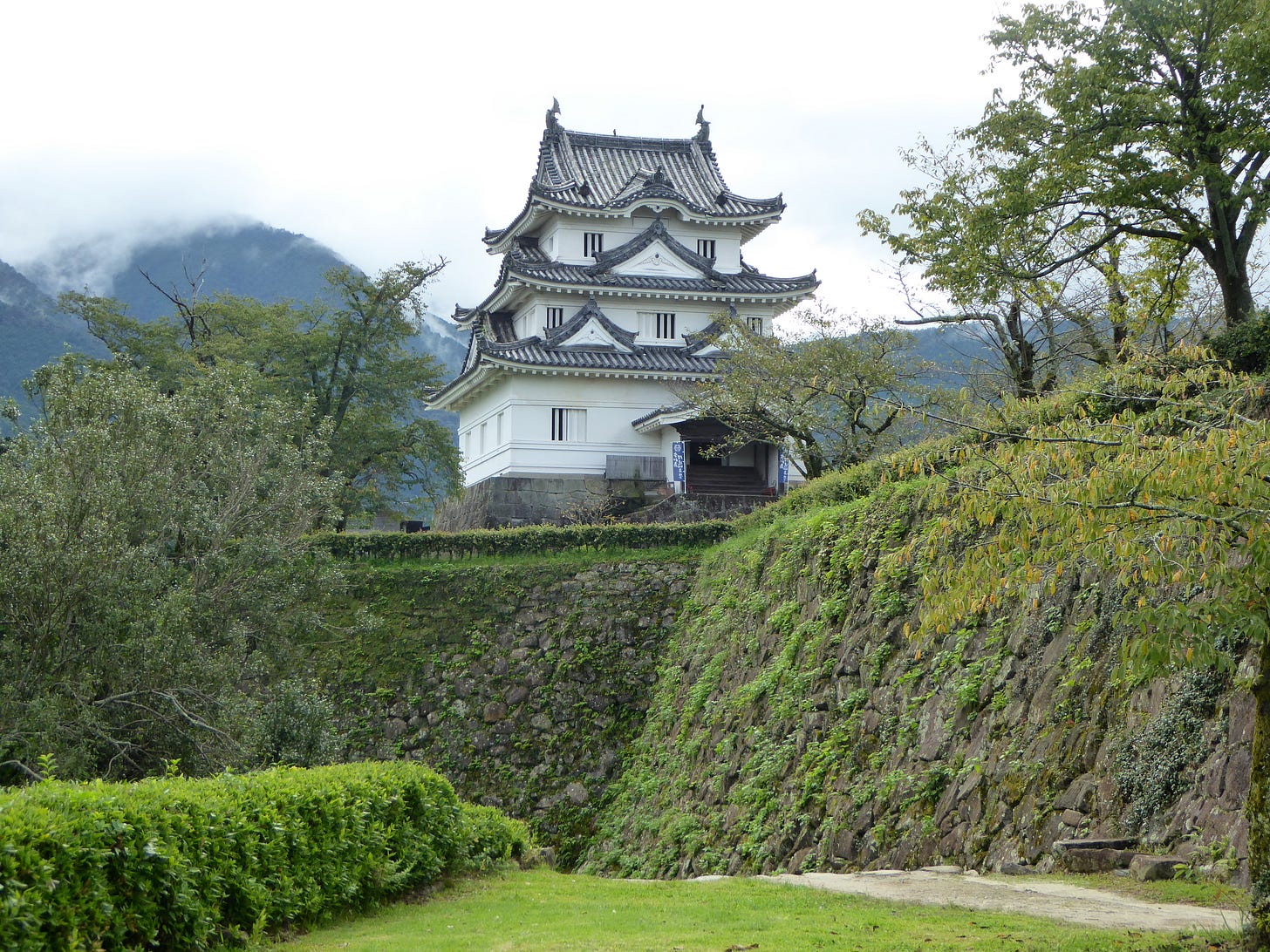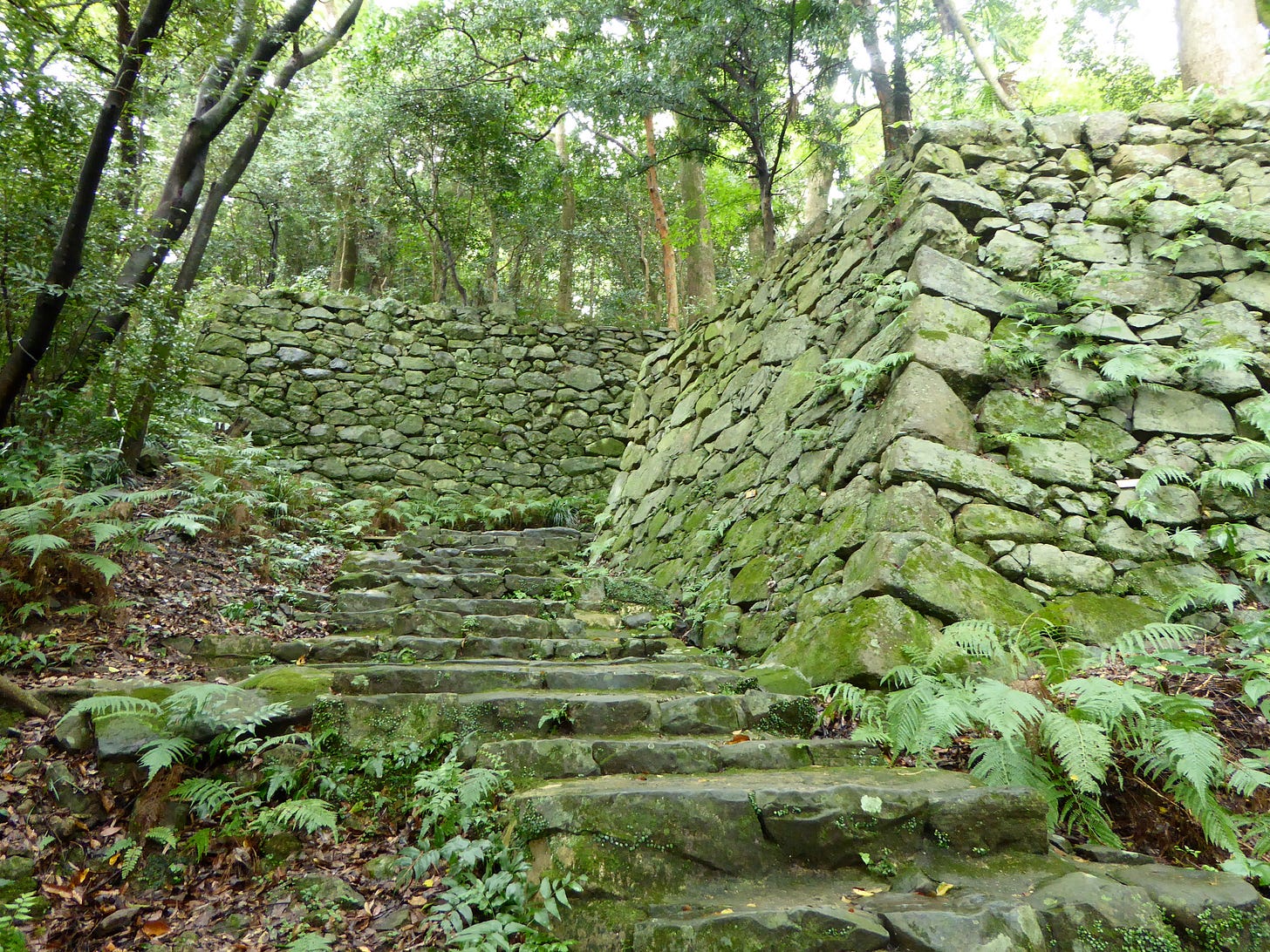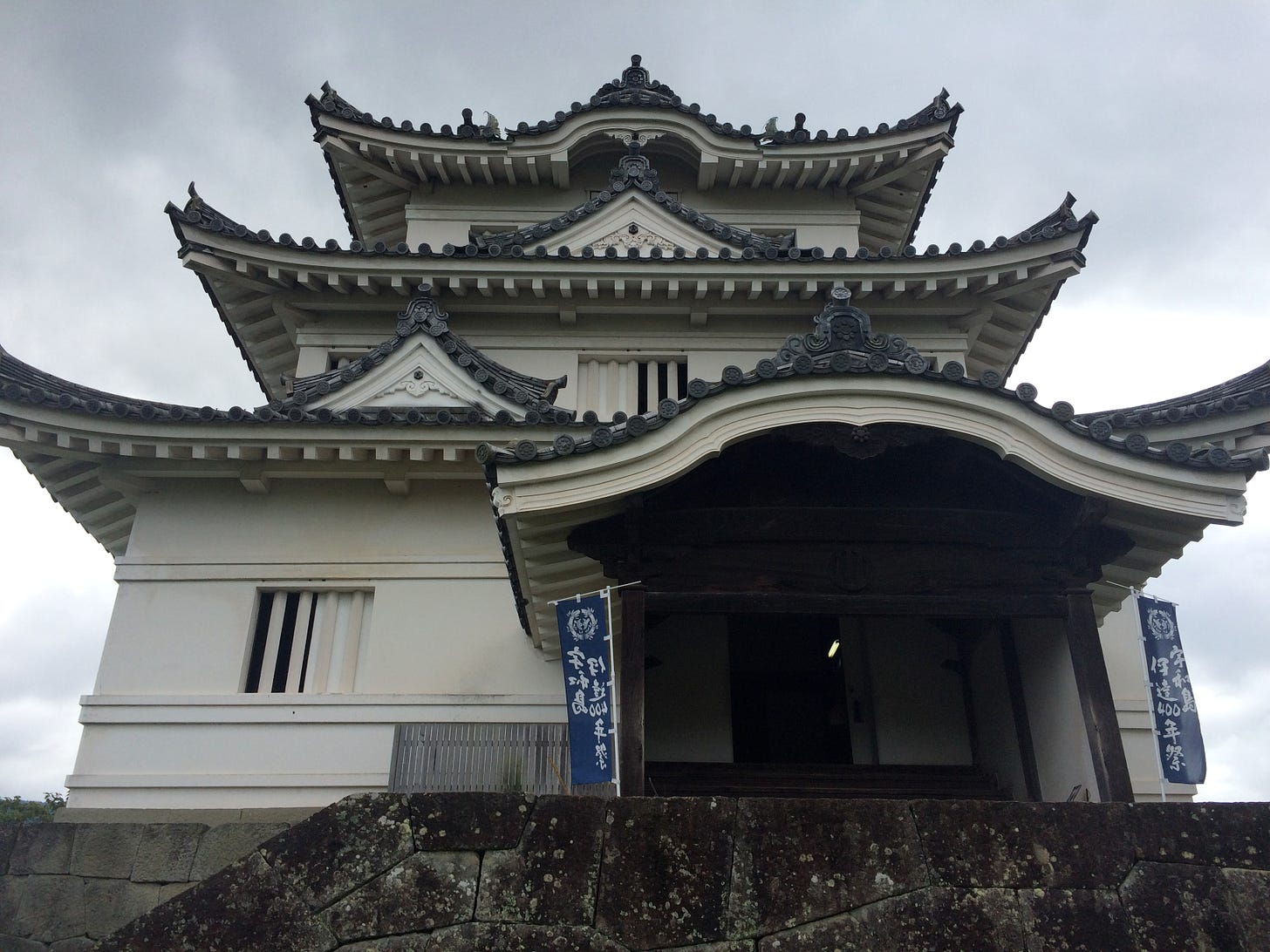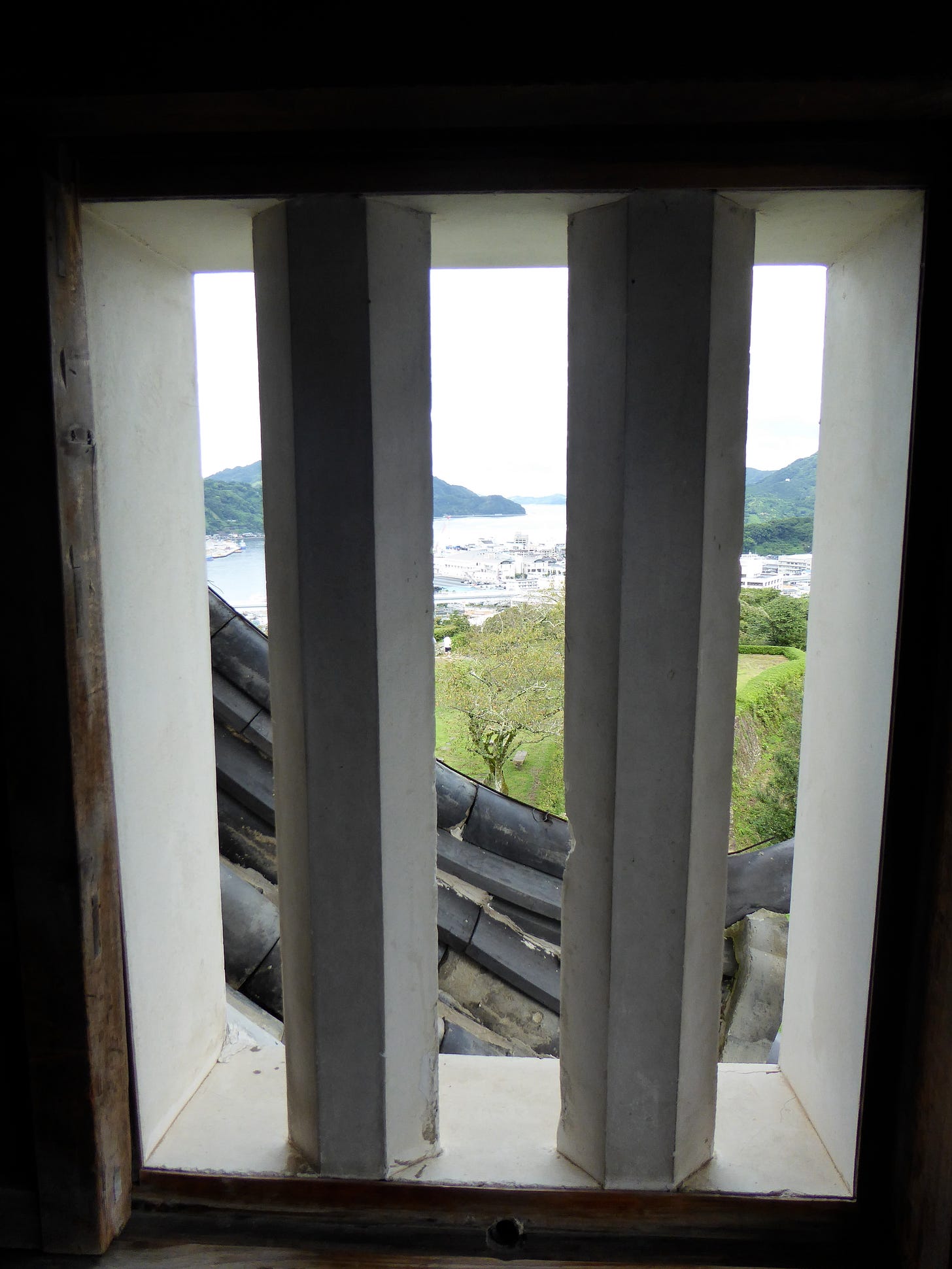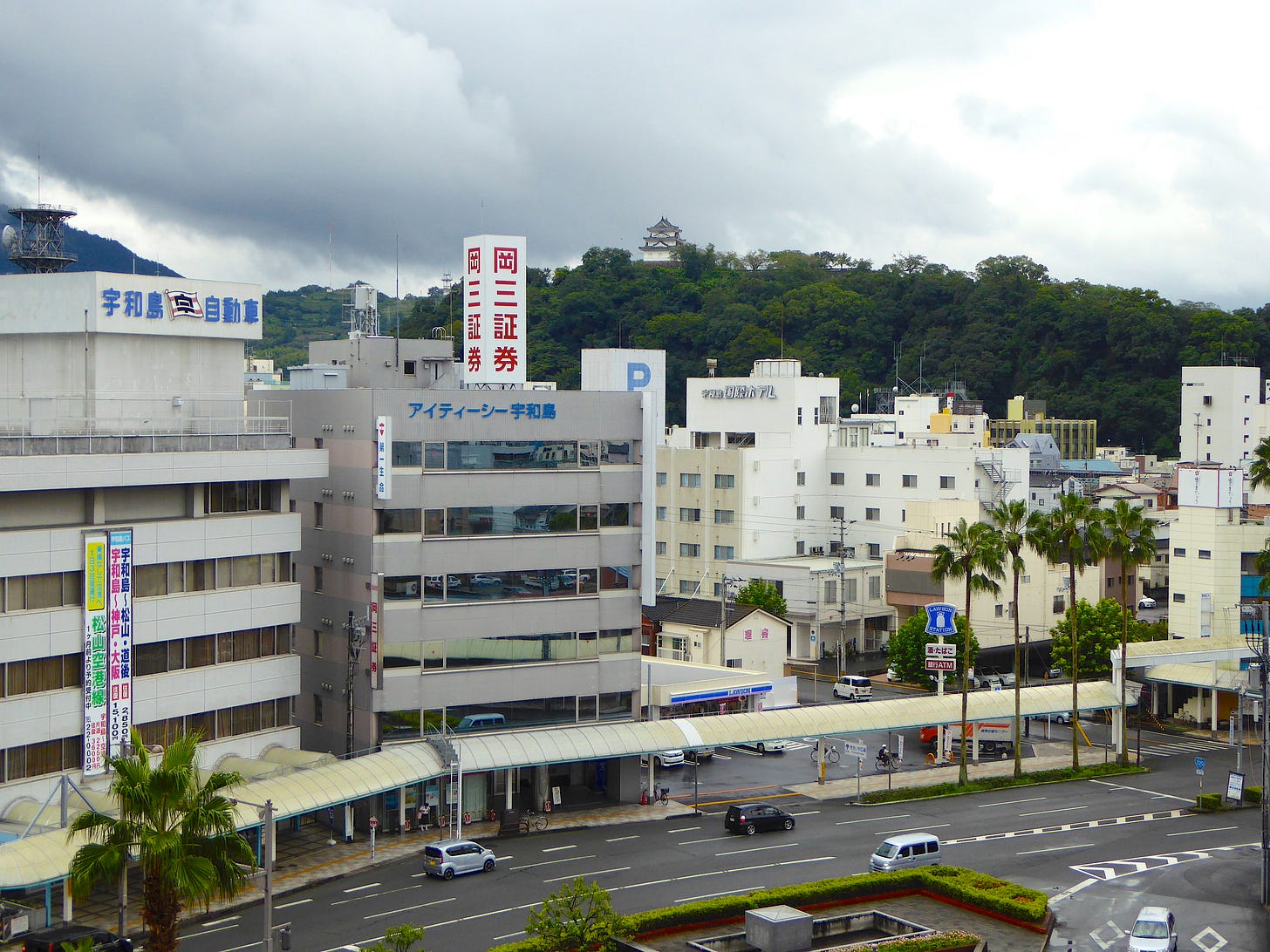Shikoku’s Uwajima Castle, on Ehime Prefecture’s southwestern coast, is a difficult to access, and therefore rarely visited samurai castle. One of only 12 castles with a tenshu keep in original condition, it is also one of the smallest.
Fortifications were first built on the 77 meter high bluff in 941. The poet and nobleman Saionji Kintsune (1171 – 1244) built Itashima Marukushi Castle there in 1203. This later came under control of the Chosokabe clan, who faced attack from their powerful rivals, the Otomo clan. Uwajima was captured when Toyotomi Hideyoshi’s forces attacked Shikoku in 1585, and the lands were awarded to daimyo Kobayakawa Takakage (1533 –1597), who installed his close vassal, Mochida Ukyo, as caretaker castellan. Kobayakawa was transferred in 1587 and was replaced with Otsu Castle’s Toda Katsutaka, who remained at Otsu, and installed his vassal, Toda Yozaemon as castellan.
The Toda clan governed poorly, being overly zealous in their handeling of Toyotomi Hideyoshi’s strict rulesregarding the 1588 katana-gari disarming of the peasantry, and the Taiko Kenchi land surveys, so much so that they overtaxed and severely impoverished the area, leaving the province in financial and social disarray. The Seiryo-ki 清良記 records explain that while many died from hunger, some 800 people were crucified, andanother 2,000 townsfolk killed or executed outright for protesting the Toda or for other offenses real or imagined. Toda Katsutaka died from illness late 1594 aboard a ship returning from Korea. The Toda were dismissed and the vacant domain was offered to Todo Takatora.
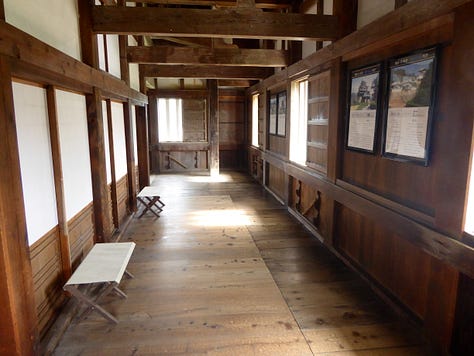
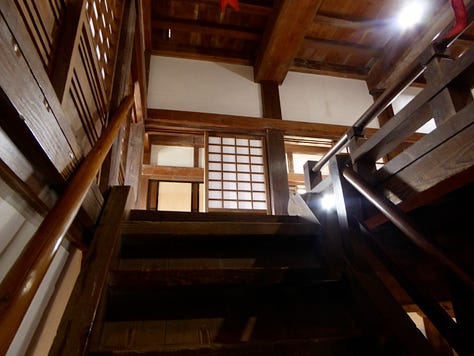
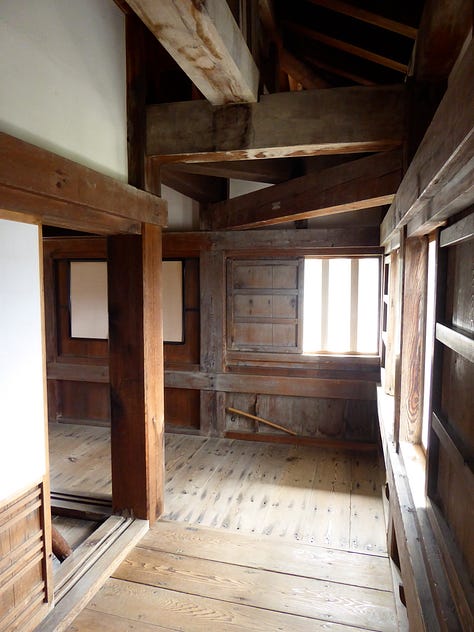
Under Todo Takatora a major reconstruction of the fortifications began. 13m high Ishigaki stone walls— the highest ever for those times — were built around the Honmaru and the northern sections, with various defensive structures built on top of that. Eight yagura watchtowers surrounded the central Honmaru bailey with the three-story tenshu keep located in the center. Despite it being of medieval style castle construction and one of Takatora’s earlier works, it bore the marks of an innovative kinsei, or early modern hirayama, hill and plains castle.
Takatora’s Uwajima Castle was pentagonal, difficult to see now because of land fill and urban development, however looking at maps, and following Route 56 and connecting roads built on the filled in moats, one can still make out the original five-sided shape with the sea on the northern and western sides. The Honmaru was at the top on the seaward side, and the Ni-no-maru bailey beside that. The Fujibei-maru was to the north, the Daiemon-maru one level below that to the west. The Nagato-maru was positioned with the Ido-maru on the east side, and the Sanno-maru on the northeast side at the foot of the mountain. Takatora’s higher ranked vassals were given the protective moat surrounded flat area around the bottom of the mountain in which to build their residences. The castle was accessed by four main gates, the main Otemon, and the Etsumon gates faced inland, while the Kuromon and Yakemon gates opened directly towards the sea.
Uwajima Castle was not just a Yamajiro, mountaintop castle, but was also recognized as one of the country’s top three Umijiro — sea castles. Uwajima was located on a hill surrounded by sea. These rare Umijiro allowed for the entry of ships and boats into the castle confines. Meiji period photographs remain of Uwajima’s two-story corner Kuromon Yagura watchtower and what appears to be a tamon yagura connected to that, with boats moored around it.
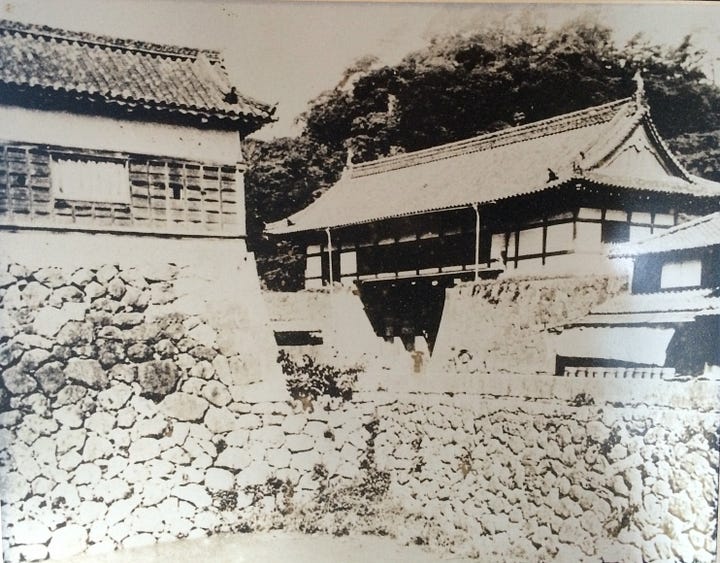

Most visitors enter Uwajima Castle from the town side, via the gate at the bottom of the hill. This isn’t the main gate, but was originally the gate of the Kori clan residence, vassals to the Lord of Uwajima. The actual castle entryway was the Nobori-Tachi-Mon Gate on the opposite side of the mountain. This rare gate is an old-styled Yakui-Mon of the sort first used in temples, and later in castle construction. It is believed to be Japan’s biggest and oldest remaining Yakui-Mon, built between 1596 and 1615. (When visiting it might be best to catch a taxi to the Nobori-tachi Mon, climb from the reverse side, see the castle, then return to the gate on the town side.) The bottom of the hill once met the ocean, providing natural protection, however land-fill since the end of the Edo period now has the castle situated some distance inland.
The name of the castle was changed from Marukushi to Uwajima in 1601, just before the Todo clan were transferred to Imabari further north, and the Tomita clan were stationed at Uwajima. Date Hidemune of the Sendai based Date clan was given the castle in 1615, and his descendants ruled until the end of the Edo period. The tenshu was rebuilt in the 1670’s, and the keeps’ entranceway veranda was added around 1850. A design model of the castle’s keep from the early Edo period and used to instruct the carpenters is on display inside.
The tenshudai, stone base supporting the keep, is made from precisely cut stones, closely fitted, and features a narrow ledge around the top. This ledge is called an inubashiri, (literally “Dog’s Walk), and exists because the original base was of a softer stone that started to erode and crumble, and so a stronger, heavier stone was used to cap the original base, leaving the small ledge around the top.
Takatora’s original architectural plans remain, as does a 1622 dated Date clan folding screen depicting the castle. Although the screen isn’t well painted, both show the original borogata styled tenshu being three-stories high, with a small tsuke-yagura annex entrance. The original keep had wood paneling protecting the outer walls around the first floor, and was much better designed than the current keep which stands on the same location.
According to reports submitted to the Shogunate in 1662, the keep had become structurally unstable 60 years after its construction. The report mentions eight pillars and ten beams on the first floor, and three pillars and seven beams on the second floor as having decayed. An attached drawing detailing the repairs required show around half of the pillars had succumbed to wood rot. This was probably due to old timbers being recycled from local temples and other castlestructures built prior to Takatora's assignment.
The extant castle tower was reconstructed in 1666 by Date Munetoshi but based on the size and principal design of Takatora’s original keep. Major renovations were carried out in 1860 following earthquake damage three years earlier. Uwashima’s keep remains the only example of the older style in which traditional washi paper-lined sliding shoji doors remain along the inner corridors, and high thresholds where tatami mats once sat. Despite the old design, the keeps’ outer walls are not to battle standard. The windows have the common vertical pillars allowing for visibility as well as protection for the defenders, and matchlock gun racks and match hooks line the walls to allow defenders to shoot directly from the windows, and another interesting feature shared only with Himeji Castle — long narrow windows along the upper walls just below the ceiling, allowing matchlock gun smoke fired inside the keep to clear. Unfortunately, the decorative triangular roofing devices known as hafu, and the extended entranceway roofline have reduced the keeps’ defensive capabilities by partially obstructing the firing range.
Besides the keep, to Uwajima Castle’s south is the extant Nobori Tachi-mon Gate, believed to be Japan’s largest remaining Yakuimon gate. (Yakuimon are a single-story castle gate. Seen from the side, the gabled roof appears to be off center from the four support pillars) Scientific analysis revealed the timber was logged between 1430-1530, and so the structure is believed to have been from the 1596-1601 Todo Takatora period. The northern entrance is via the relocated mid Edo period Kuwaori Nagayamon Gate from the estate of the chief retainers, the Kuwaori family. Most of its’ left side has been cut back, so much of its original shape is lost, yet it remains a city-designated Tangible Cultural Property. Uwajima Castle’s Yamazato Warehouse, originally an armory built in the San-no-maru precinct in 1845 and relocated to its present location in 1966 where it serves as the Shiroyama Folk Museum, also remains.

Uwajima Castle was abandoned in 1871, and most of the turrets, gates and remaining structures were torn down in 1900. The Ote Mon Gate was destroyed by WW2 bombing. In 1950, the castle was awarded Important Cultural Property status, and is designated one of Japan’s Top 100 Castles.




